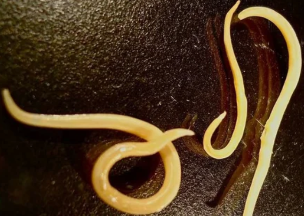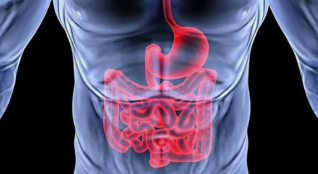Before you begin the treatment of parasites, it is important to determine exactly what type is present in the body. This is necessary to collect methods of effective treatment, as most drugs are designed specifically to get rid of a particular type of helminth.

How are earthworms more simple
Sometimes you can hear the phrase that the patient is infected with the worms. It is necessary to understand that the simple is exclusively single-celled organisms, in extreme cases, the organization of the colony. But they are never multicellular organisms, such as worms and helminths.
Along with the most simple of all the processes occurring in least cell cytoplasm and cell nuclei, while that of the worms anatomical organization much more difficult: they have different organs that perform special physiological functions. Therefore, to include the worms to the more simple in the root of the evil.
Sometimes worms called protozoa parasites in comparison to insects: bed bugs, lice, etc, since the latter are much higher up on the evolutionary ladder. In that sense, the name of the worms animals.
- Symptoms, treatment and prevention of sarcocystosis in the human being.
- Are there worms in black color in the human being.
- How are the eggs of the worms.
Most common parasites
The most common form of endo-parasites are, without doubt, helminths (worms), which, according to various sources, infected more than 80% of the population of the planet.
A large number of these parasites are divided into to main types:
- nematodes – nematodes (ascaride, ostritsy, Trichinella, vlasoglav etc);
- cestodes tape worms (lentetsy, pig and bull tsepen, tapeworm etc);
- trematody – worms-flukes (liver, blood, lung, as well as the trematodes that inhabit the intestine).
You can sometimes find more of a common classification, according to which all types of parasites of people are divided into:
- translucent (intestinal), infect in the intestine;
- cloth, localized in other organs and tissues.
Let's look at a brief description of the most common species of helminths.
Round worms (nematodes)
- Ascaride most common of the nematodes of the length of 20 to 40 cm, parasites in the small intestine, but previously to migrate in the human body, to the surprise of the circulatory and the respiratory system. Along with the bowel of these parasites can be found in the liver and the gall bladder, the heart and the lungs. Frequent symptom living with roundworm – an allergic reaction.
- Ostritsy small worms, up to 1 cm, which affect the bowel and cause enterobiasis with the disorder work gastrointestinal, fatigue, sleep disorders, and other Hallmark symptom of the presence of pinworms – itching in the area of the anus, where they lay their eggs.
- Trichinella – these worms are microscopic in size in only a few millimeters) lead to a large disease – trihinellez, which may, in the absence of treatment lead to death. The adults inhabit the body of the people in the muscle (respiratory, facial, and other), causing muscle aches, fever, swelling, allergic skin rashes.
- Vlasoglavy – small worms (length of up to 4.5 cm, with the front part of the body
in the form of a thread), the larvae are called trihozefalez with acute diarrhea, abdominal pain and other symptoms that are reminiscent of the appendicitis. As A result of the intoxication of the organism develops anemia.
Tape worms (cestodes)
- The choice of lentets, the body length of a prison term of up to 10 m, leads to the development of the difillobotrioz with nausea, weakness, vomiting, unstable chair, asthenia, and anemia.
- Swine tsepen has a length of 3 to 8 m, parasitizes mainly in the small intestine and causes two diseases: taeniasis with dyspeptic, asthenic-neurotic and abdominalnim by syndromes, and the cysticercosis with intoxication, intestinal, allergic, and respiratory syndromes. Depending on the location of tsistitserki the involvement of the muscles, the brain, the heart, eyes and other
- Bullish tsepen, whose length can be up to 18 m, causes the beef tapeworm infection, and is considered one of the most dangerous species of worms. If you do not question what to do deworming, you can live in the human body, up to 18-20 years. It is located in the colon, causes a strong intoxication by the products of their livelihoods, as well as diarrhea, nausea, vomiting, abdominal pain, anemia, allergic reactions, and problems with the nervous system.
- Dwarfish tsepen of the total length of 1.5-5 cm from the source of the gimenolepidoz with dyspeptic, armbar and asthenic-neurotic syndromes that affect, above all, digestive, and nervous systems of the body, as well as the liver.
- Echinococcus is considered the most fine of the tape worm – its length is only 2.5 to 8, rarely 9 millimeters, however, the infection will have terrible consequences in the form of lesions in the liver and lungs, where they form cysts and tumors that cause the dysfunction of these organs.
Worms-flukes (trematody)
- Liver Fluke, or fluke liver shape resembles a length of 30 to 50 mm and a width of 8 to 13 mm, it has a suction cup. Damages the sheath of the liver and sticking the bile ducts, is capable of coating completely the reflux of bile. Can lead to cirrhosis, jaundice and liver cancer.
- Cat (siberian) Fluke, or fluke feline, plane of the worm length from 4 to 13 mm from the Location of the ducts of the gallbladder, the liver and the pancreas. Called opisthorchiasis with the development of gastritis, ulcers, pancreatitis, acute cholecystitis, until the cancer of the liver, which can lead to death.
- Lung Fluke is ovoid in shape, red-brown body with small spines, length of 7.5 to 12 mm with a width of 4 to 8 mm Affects the lungs, causing inflammation, pleural effusion, coordinator of the fibrosis and lung cancer. Penetrate into the brain causes encephalitis and meningoencephalitis.
- Schistosoma (blood flukes) – razdelnopolie worms the size of 1-2 cm, the eggs that cause the increase in the size of the liver, spleen, and lymph nodes, the formation of polyps in the intestine, diarrhea, granulomatous inflammation, which lead to bladder cancer.
Diseases that cause
The most dangerous parasites that live in the human body, can cause a variety of diseases. Very often, the disease, cause-specific parasite that carries the same name as him. Thus, the different types of parasites in the human body can cause the following diseases:
- certain parasites in the interior of man (flukes) cause the ditch;
- the cestodosis arise from the defeat of the tape worms;
- if the child or adult in the intestine of the nematodes, are diagnosed nematodes;
- the leeches cause hirudins;
- Fur seal cause skrebni.
However, the parasites in the body of a person may affect not an organ. Depending on the location of the parasites in the human body, we distinguish such parasitic diseases:
- The exposure of the eye can result in onchocerciasis, infection, cysticercosis, and against the screwworm;
- Diseases of the gastrointestinal organs caused by single-celled parasites and worms, – the ascariasis, trihinellez, hookworm, enterobiasis, intestinal against the screwworm and metagonimus;
- The disease – brain echinococcosis, toxoplasmosis, alveococcosis, and cysticercosis;
- Dermatological disease – infection, lice, scabies, pulicosis, trombitas, ftiras;
- Pathology is pulmonary echinococcosis, ascariasis, acariasis, alveococcosis, tomingas etc;
- Disease of the liver – opisthorchiasis, alveococcosis, echinococcosis, the clonorchiasis;
- In the mouth, in the area of the ears and in the oral cavity, and parasites can cause different types of myiasis;
- Pathology is the heart – dirofilaria and echinococcosis;
- Diseases of the genitourinary system – alveococcosis, urate measy, echinococcosis;
- Pathology is one of the blood vessels – filaretos and schistosomiasis.
Flat helminths
Flat worms, or flukes (trematody), have the characteristic leaf shape of the body. The structure is very organized — they have digestive, excretory, and nervous system. During the life cycle of change their masters.
The distribution received the most important classes:
- Anthrax Fluke (fluke cat), or opistorchis. Most often, the infection occurs through the raw fish, which leads to the appearance quite dangerous, disease — opistorquiasisy. The multiplication of the parasites is very fast, which can cause serious consequences. The worms have a yellowish hue, and its length can be difficult to overcome the 12 m paying attention in the human body, these parasites cause internal bleeding, violate the bile reflux that causes the dysfunction of the pancreas. Dangerous side effects: cholangitis, purulent type, the aquilia, the cholangiocarcinoma.
- Liver Fluke. Intermediate teacher representatives are cattle, and man is infected by eating poorly treated in the meat of the affected animals. As a result of the infection develops the disease fascioliasis. By the size of these worms are relatively small (not more than 5-6 cm), but are able to cause dangerous condition is: evidence of liver abscesses, cholangitis sclerosing, hepatitis. Through the blood of the larvae of the parasite can explode throughout the body.
- Shistosoma. The worm is able to stay in the blood vessels, the consumption of the components. As a result of their vital activities, it is possible to the development of varicose veins, tumors. The main symptom is severe general intoxication.

In the human body can detect a large number of different worms parasites capable of binding to a variety of internal organs. All of them cause chronic diseases, which can cause serious pathology is. When the signs of worm infections of any type, you should consult your doctor to initiate appropriate treatment.
Bullish tsepen
Bullish tsepen can reach a length of up to 12 m. It is hermaphroditic, which can manufacture more than 100 000 eggs leave with the feces. The eggs fall into the ground and then into plants, these plants are eaten by livestock. In the body of the animal the eggs hatch into larvae, which are located in the muscles. If a person eats the flesh of cow, the larvae enter the intestine. Person-to-person, the larvae are not transmitted.
The adult worms are of the crown with four suckers, the neck and the body, formed by segments. The number of segments grows, the mature segments separate from the worm and to relieve ourselves of the intestine of the person outward.
Bullish tsepen
The symptoms of the disease are nausea, vomiting, dyspeptic disorder, increased salivation, dizziness, weakness, nervousness, fatigue, abdominal pain of uncertain localization, allergies, changes in appetite.
To check out bullish tsepen of the body, there is a schema that consists of 3 stages: preparatory (purification of the body), the anti-parasitic medicines for the recovery of the diet, phytotherapy).
Tape worm
The great worm-type conveyor, or cestodes, include a wide range of flat worms, whose length can be from 2 mm up to 10 to 12 m. the bodies of the parasites has its special structure — the number of the segments, the head and neck with suction cups (hooks) to the fastening on the walls. The cestode — hermaphroditic, and eggs are found here in segments. The nutrients in worm absorbed through the entire surface of the body.
We highlight the following common types of tape worms:

- Alveolar. They are able to lead to sclerosing cholangitis and abscess, and which extends in the spleen, the muscles and the brain.
- Tsepni, or tapeworms. Bullish tsepen excites the disease, beef tapeworm infection, and is usually found in the small intestine. Serious complications of cholecystitis, intestinal obstruction, appendicitis. This worm is able to lead to these consequences: atrophy of intestinal shell, the glossitis of paul, leukopenia.
Protozoan parasites
Toxoplasma gondii (Toxoplazma gondii) – a type of parasites, the owner of the main are cats. You can also transfer warm-blooded animals and man. The disease, caused by Toxoplasma, is called toksoplazmozom. Course of the disease is easy, with the exception of the defeat of the fetus inside the womb of your mother the time of a pregnancy, resulting in serious consequences, both for the mother and the fetus, or even death.
Amoeba simple unicellular organism present, is considered to be one of the first beings which have ever lived on the Earth. The disease, caused by the amoeba, is called amoebiasis. An intestinal infection, with predominance of the ulcerative the defeat of the large intestine with the advent of the bloody diarrhea, the possibility of the secondary education intestinal foci, with a tendency to chronic and leakage.
The malaria Plasmodium – single-celled creature in the cycle of development of which the person is a temporary owner, and the mosquito a permanent. In the human body, parasitic Plasmodium filed the 4 types:
- P. malarie the four-day malaria;
- P. vivax — the three-day malaria;
- P. ovale — the three days of ovale malaria;
- P. falciparum — tropical malaria;
The duration of the interval between bursts depends on the type of pathogen. In addition to all of this develops anemia, as well as the Plasmodium affects red blood cells red blood cells.
Giardia — intestinal in the form of a pear, which have two nuclei and four pairs of flagella. The main source is the pig and the people. Giardiasis — a common disease, by far, the defeat, the liver and the small intestine. The disease can occur both in light as in the severe form.
Trichomonas – flagellated single-celled organisms in the form of a pear, cause of the disease, trichomoniasis, are transmitted by sexual intercourse, and affect the urinary system. Remarkable suffering men and women, but in men the symptoms are generally asymptomatic.
The trypanosome – rod single-celled most simple flagellates. Cause a severe disease of trypanosomiasis, a deadly to humans are the disease of the dream. Vector of the trypanosomes are bed bugs, the tsetse fly. In the body of the host parasite multiplies under the skin, then penetrates into the lymphatic system and the blood. The majority of pathogens are found in spinal and in the brain, where they destroy cells and produce their toxins.



























